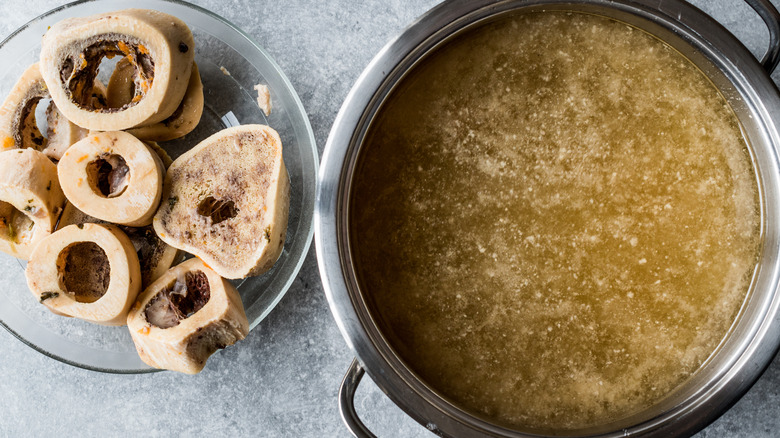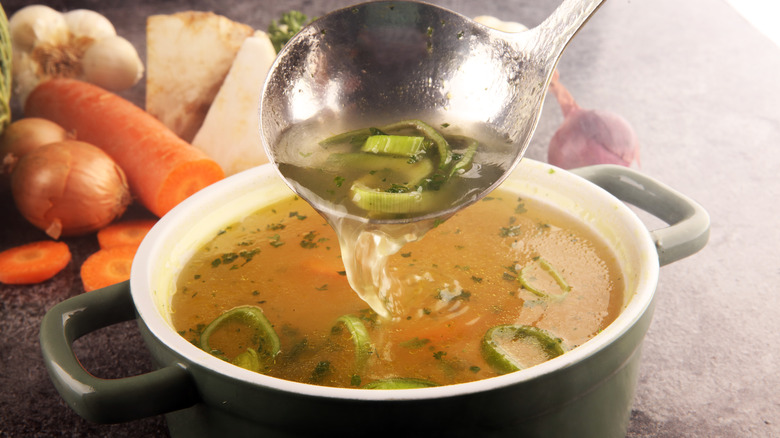When You Should Be Using Stock Vs. Broth
We may receive a commission on purchases made from links.
The days get shorter and the weather gets colder as we descend deeper into the heart of soup season. Nothing mends the spirit during the arduous winter months quite like the warmth of hearty stew on a frigid day or revitalizing bone broth while getting over a cold. However, it doesn't have to be freezing to enjoy a nice soup, in fact, part of the beauty of soup is that it's so easy to make and can always be in season so long as you know what base is appropriate for your dish.
Most soups and sauces start with either a stock or a broth, but what is the difference between the two? Though recipes tend to use them interchangeably, there is a key trait of stock that sets it apart from traditional broths. Knowing exactly how and when to use a stock or broth can drastically improve the texture, heartiness, and satisfaction of a soup or sauce.
Is this in stock?
According to the basic brown stock recipe from Martha Stewart, stock is liquid made from cleaned animal bones that have been roasted, seasoned, simmered in water for an extended amount of time (anywhere from three to 12 hours), and strained. The explicit use of bones in stock is important because of the collagen that the bones release into the liquid. Collagen adds the fatty richness, robust flavor, and thick texture that distinguishes a stock from a broth.
Because of its distinct texture, stock is preferred for use in thicker stews, gravies, and au jus (via Healthline). Though stock still has a full and robust flavor, its role in a dish is to enhance richness and mouthfeel, whereas a broth is utilized more as a vehicle for assimilated flavors. In this sense, stocks are better showcased in soups and sauces that have complementary ingredients, where it plays more of a supporting role.
O broth, where art thou?
On the other hand, broth is more like the stage on which the medley of flavors performs. Broth is actually the more general term for a soup base, but it implies a shorter simmering time, yielding a lighter, more seasoning-forward liquid than stock. Broth is a liquid made by cooking vegetables, poultry, meat, fish, and seasonings in water (via MasterClass). Like stock, broth can also be made with animal bones, but typically these bones aren't as stripped down as the ones used for stock, instead broth bones usually still have meat that imparts its own flavor to the pot (via Martha Stewart). Because of their lighter texture but more nuanced flavor, broths are best used in delicate soups pho, Italian wedding soup, or savory miso soup.
Some culinary terms like bone broth and vegetable stock blur the distinction between stock and broth. Bone broth is essentially a stock that simmered even longer than usual (according to Food Network), and after straining out the solids, the result is a much more concentrated flavor as the broth is intended to be sipped on its own. Vegetable stock implies a full-flavored, long-simmered vegetable broth that focuses less on seasoning (via Substitute Cooking). Though they seem synonymous, knowing when to utilize a hearty collagen-rich stock versus a delicately seasoned and clarified broth can impact a dish's texture, presentation, and flavor translation.


